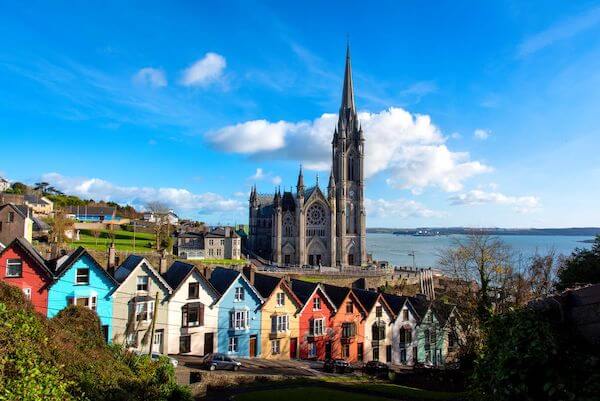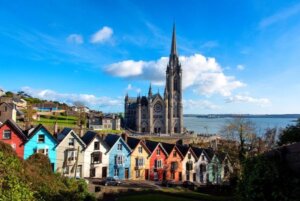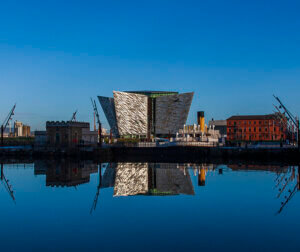Much has been written about the Titanic’s construction in Belfast in the early 1900s, but the story of the ill-fated ocean liner can’t be told without mentioning its last port of call in Queenstown, County Cork, now known as Cobh.
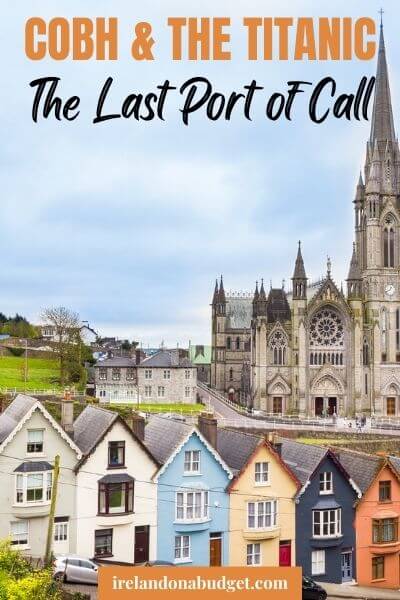 This blog post contains affiliate links, and I may earn compensation when you click on the links at no additional cost to you.
This blog post contains affiliate links, and I may earn compensation when you click on the links at no additional cost to you.
On April 11, 1912, 123 passengers boarded the ship from there, bound for a new life in America.
Three of them traveled first class, while seven were in second class accommodation and the remainder traveled in steerage.
If your ancestors came from Ireland, there’s a good chance that they left from this pretty town on Ireland’s southern coast.
In fact, close to 3 million Irish people left Queenstown (named after Queen Victoria’s visit to the town in 1849) between 1848 and 1950, largely because of the Great Famine and the dismal prospects for employment in Ireland following that disaster.
The Day of the Titanic's Departure from Queenstown
The Titanic didn’t pull into Cobh Harbor because it wasn’t considered big enough.
Instead, tenders were used to bring the passengers directly to the ship.
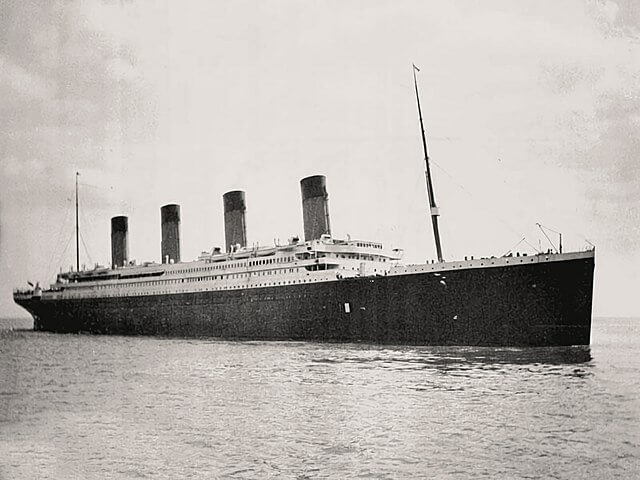
Several smaller vessels also made their way to the Titanic, which was anchored for two hours at Cobh, selling local specialties like lace and other crafts to the ship’s wealthier passengers.
It was reported that John Jacob Astor, the ship’s wealthiest passenger, paid more than $800 for a lace shawl for his wife, Madeleine.
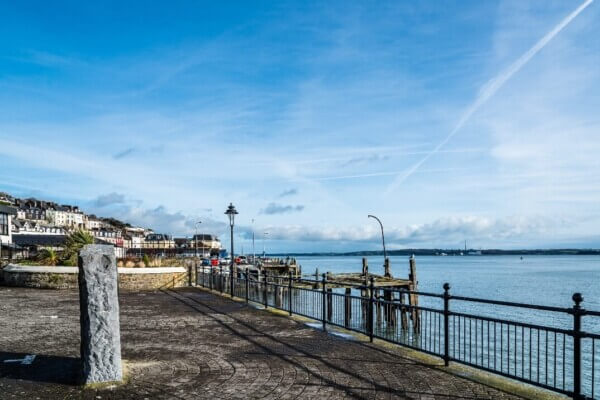
At 1.30 p.m., the whistles were blown, and the Titanic made its way out into the North Atlantic, with the sound of a bagpiper and steerage passenger Eugene Daly playing “Erin’s Lament” and “A Nation Once Again.”
The 29-year-old survived the tragedy but only after jumping off the ship and managing to get into a lifeboat.
A total of 1,308 passengers were on board as they left Queenstown, in addition to a crew of 898.
A total of 1,517 would lose their lives to the tragedy.
Queenstown’s History as an Emigration Port and More
From the 1860s onwards, most emigrants arrived at Queenstown by rail.
As a result, the town was busy and if you look at old photographs of it, you’ll notice just how prosperous it seemed to be.

Many of the arriving passengers would have been met by touts or runners from the local lodging houses. Once their bags were stored by the shipping agent, they could find their way to suitable accommodation.
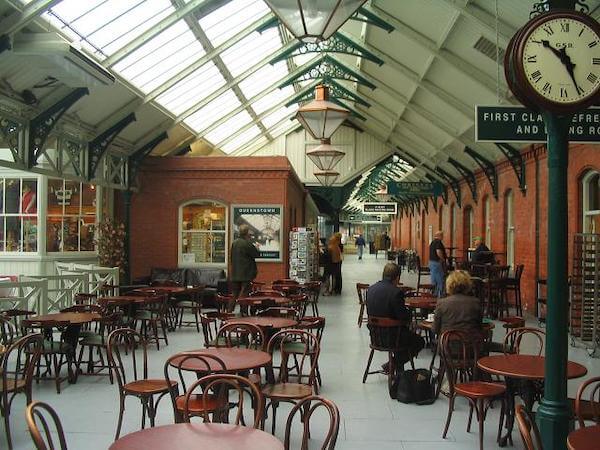
Today, a journey by train to present-day Cobh will bring you to the Cobh Heritage Centre, where you can retrace the footsteps of those early emigrants and ancestors in an exhibition called The Queenstown Story.
The town’s reputation as a departure point for millions of emigrants was also vital to the British Empire during the 18th century, with the British building a coastal defense fortification in 1743 known as Cove Fort.
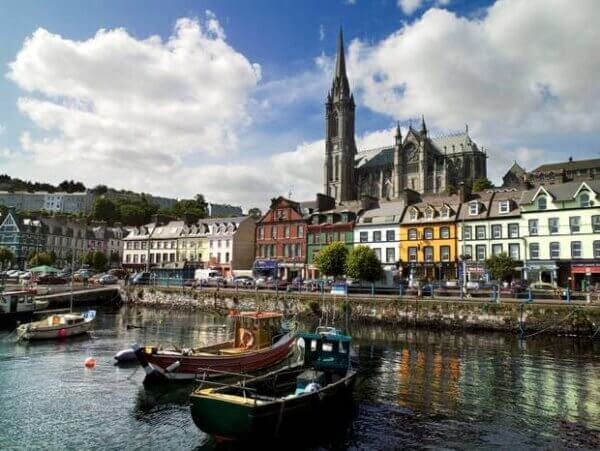
The harbor area would later prove to be particularly useful to them during the American War of Independence, where arms and other supplies were shipped to the American colonies.
Local traders and businesses no doubt reaped the benefits of this and from the Napoleonic Wars that followed.
Up to 300 ships at a time could be seen in the waters surrounding Cobh during this period in the town’s history.
Tall ships also transported convicts (men, women, and children) to Australia from Cobh, and several exports left the harbor, including food, leather, and timber.
Joy and Sadness Reflected at the Cobh Heritage Centre
The feeling of hope and sadness felt by many emigrants leaving Ireland forever is captured in a statue outside the center. It depicts Annie Moore, the first emigrant to be processed at Ellis Island, along with her brothers.
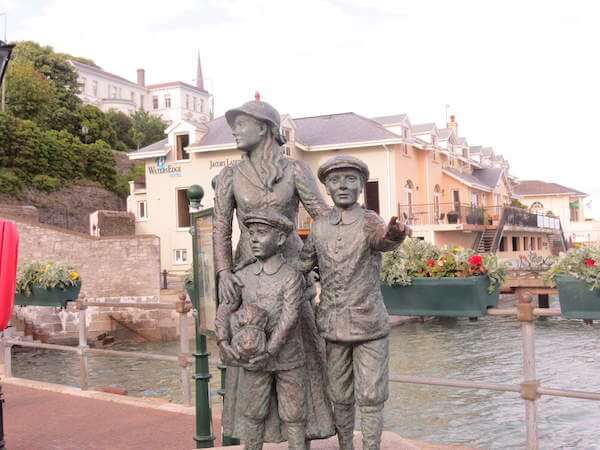
More somber memorials at the center reflect the loss of life from not only the Titanic tragedy but also from the Lusitania, which was sunk by a German U-boat during World War I.
Close to 1,200 passengers died on the ship.
Both the living and the dead were brought to Queenstown. The bodies of over 100 people who perished in the disaster were buried in the Old Church Cemetery, just north of Cobh.
A Lusitania Peace Memorial can be found in Casement Square, opposite the Cobh library and courthouse.
Have you visited Cobh in County Cork? Or perhaps your ancestors left from Cobh/Queenstown? Let me know in the comments below.
Read More: Titanic Life Jacket on Display at Titanic Belfast

